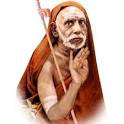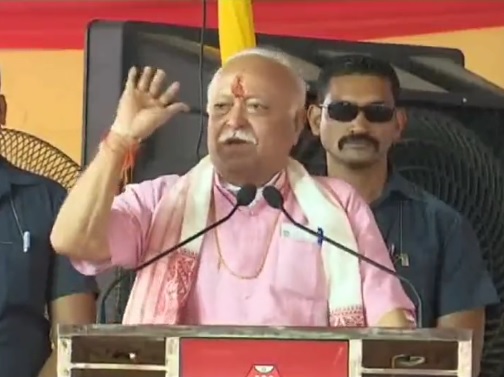Bankim Chandra Chatterjee & Kanchi Paramacharya
 BANKIM CHANDRA CHATTERJEE: Bankim Chandra Chatterjee’s Vande Mataram was precisely what Sri Aurobindo was referring to when he was talking about the country — that India was not an ordinary mass of land or a fractured nation ripped apart by diverse cultures, but a motherland, which had been chained. In a moment of inspiration from the divine, Bankim brought all that India needed.
BANKIM CHANDRA CHATTERJEE: Bankim Chandra Chatterjee’s Vande Mataram was precisely what Sri Aurobindo was referring to when he was talking about the country — that India was not an ordinary mass of land or a fractured nation ripped apart by diverse cultures, but a motherland, which had been chained. In a moment of inspiration from the divine, Bankim brought all that India needed.
Bankim recognised, during his lengthy tenure as district sub magistrate between 1858 and 1891, that Indians were missing two critical components that united societies. First, the nation was missing the linguistic prowess required for the country’s future. And second, the nation was missing an emotional connection to the motherland. With a single poem, he provided both. In Bengali Sanskrit, he democratised the language and gave it the political impetus it lacked — a song of ‘Bharat’ that could be sung by anybody. By doing so, he invented a medium through which everyone could express their devotion to the motherland.
Bankimchandra had a purpose behind his preaching that love for the country or patriotism constituted the highest religion. But for such a theory, he could not inspire his countrymen to achieve that identification between the individual and his country which constituted the first essential element of nationalism. The religious theory of patriotism found its fullest bearing in another new coinage offered by Bankimchandra to this effect: that the motherland was every Indian’s mother herself, that she was a goddess to be worshipped, and that in such worship of the goddess or deity of Mother India lay the highest religion of the people of India.
In putting forth his observation that the motherland that was India was every Indian’s mother and goddess as well, Bankimchandra asserted that such a goddess should be viewed as the combination of the three goddesses Durga, Lakshmi and Saraswati, with Durga, bearing weapons in ten arms symbolizing national valour and conquest of evil, Lakshmi, sporting in lotus filled lake, symbolizing plentifulness of national wealth and prosperity, and Saraswati symbolizing the abundance of the nation’s learning, knowledge and wisdom. Such an imagery found its most beautiful illustration in the song Vande Mataram (Hail Motherland), which Bankimchandra composed in 1875 and later incorporated in his novel Ananda Math.
KANCHI PARAMACHARYA: While Bankim Chandra Chatterjee from the East visualized Durga, Lakshmi and Saraswathi in the motherland, Jagadguru Kanchi Paramacharya from the South visualized Durga, Lakshmi and Saraswathi in our National Flag. In his Independence Day Message on 15th August 1947 Kanchi Paramacharya said that, “There are three stripes in our National Flag. They are of dark green, white and orange colours. These colours seem to indicate to us, that military strength for protection from enemies and evil, wealth for welfare and prosperity, and knowledge for the sake of proper administration are essential for the nation. It is a happy coincidence that the colour of the three Shakthis(Goddesses of Power) are seen in the three stripes of the National Flag.”
Nobel Laureate C.V.Raman and Hockey Legend Dhyanchand
C.V.RAMAN: C.V. Raman deserves to be remembered not only for his towering scientific accomplishment but also for his indomitable will. Raman was a staunch patriot and he had great faith in India’s potential for progress. On receiving the Nobel Prize (1930) he remarked, “When the Nobel award was announced I saw it as a personal triumph, an achievement for me and my collaborators — a recognition for a very remarkable discovery, for reaching the goal I had pursued for 7 years. But when I sat in that crowded hall and I saw the sea of western faces surrounding me, and I, the only Indian, in my turban and closed coat, it dawned on me that I was really representing my people and my country. I felt truly humble when I received the Prize from King Gustav; it was a moment of great emotion but I could restrain myself. Then I turned round and saw the British Union Jack under which I had been sitting and it was then that I realised that my poor country, India, did not even have a flag of her own – and it was this that triggered off my complete breakdown.”
DHYAN CHAND: While C.V.Raman from the South completely broke down that he was receiving the Nobel Prize under British Union Jack Flag, in the same way hockey legend Dhyan Chand from the North also was very much upset when the British flag went up after the Indian team won hockey gold.
With Hitler in audience and most of the 40,000 spectators cheering for their team, odds were heavily in favour of the German team in the final hockey match at 1936 Berlin Olympics. Also, India had lost 4-1 in a practice match with the hosts. A dose of patriotism, however, was all that lifted their sagging morale. It was provided by legendary Dhyan Chand.
In the dressing room, the Indian captain and his men were singing Vande Matram, standing before a tricolour. “The players took oath on the tricolour that they will play their best in the do or die match,” Dhyan Chand researcher Hemant Dubey said, adding that it was probably for the first time that an Indian sportsman asserted his team’s identity by displaying the flag, which had been adopted by the Congress in 1931.
Dhyan Chand scored a hat-trick and India thrashed Germany 8-1. The date was August 15, a strange coincidence.
“Major Dhyan Chand was the first sportsperson of India to take oath on the Tricolour under British Raj,” Dubey said.
“The idea of taking oath on the Tricolour came to Dhyanchand from one Dr Tarak Das in Berlin. Dhyanchand felt bad when the British flag went up after the team won hockey gold. He was going to hang his boots after the match. As a patriot he couldn’t control his feelings and dared to take out the Tricolour for taking oath,” he added.

